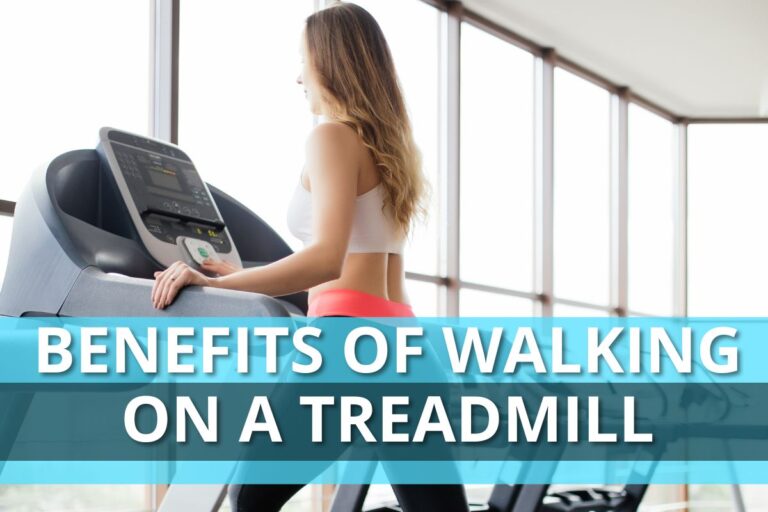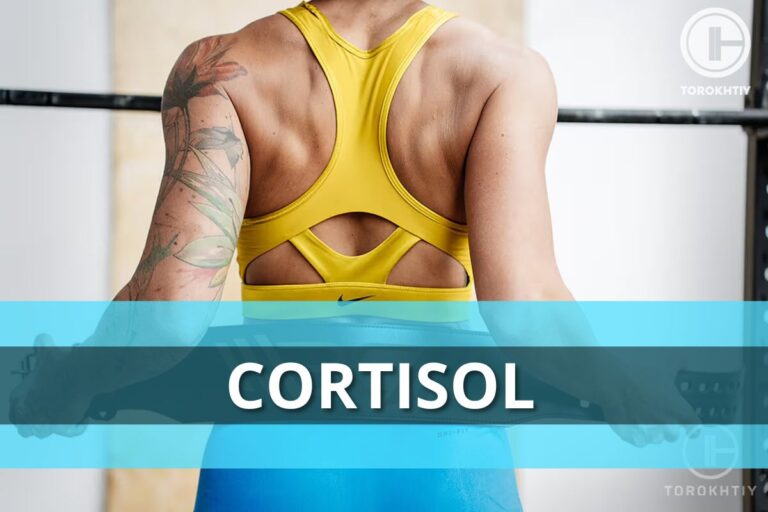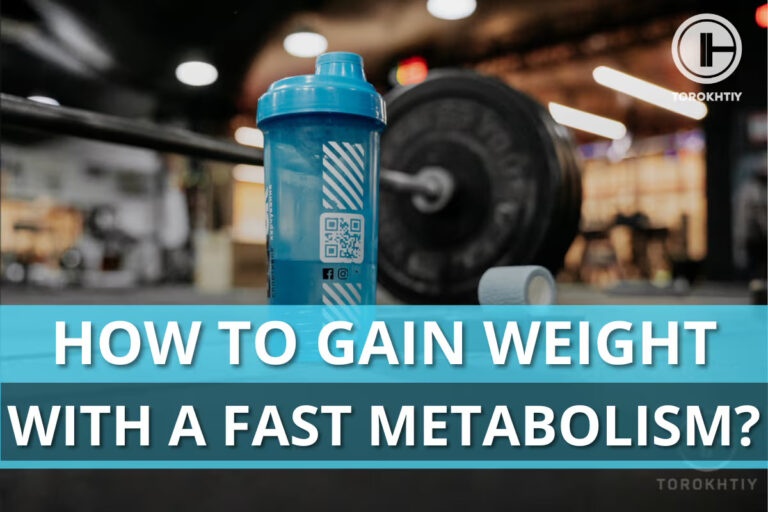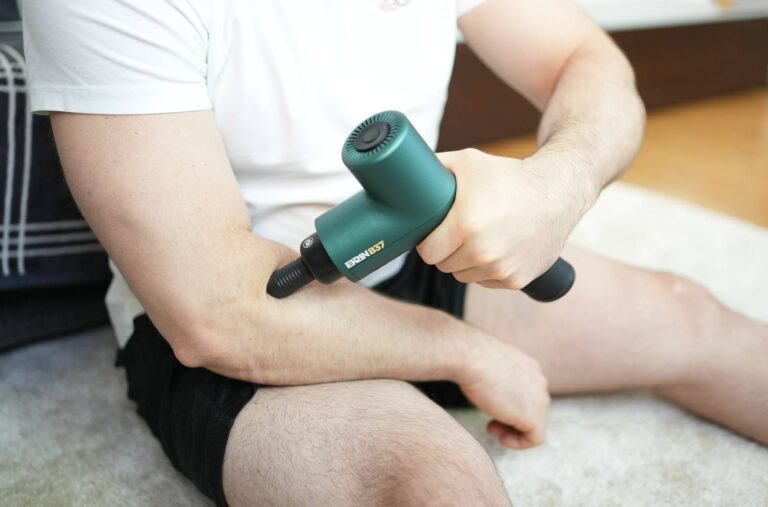Deadlift Belt Position: Where Exactly & How Tight?
The role belts play in maximal lifts is undeniably crucial but many fail to recognize the importance of deadlift belt position. The tightness of the fit and the exact location of the belt around your torso dictate the effectiveness of your belt.
There are multiple things to consider in identifying the deadlift belt placement for you. However, lifters commonly wear their belts midway between the rib cage and the hip bones during deadlifts making this the most comfortable lifting belt position.
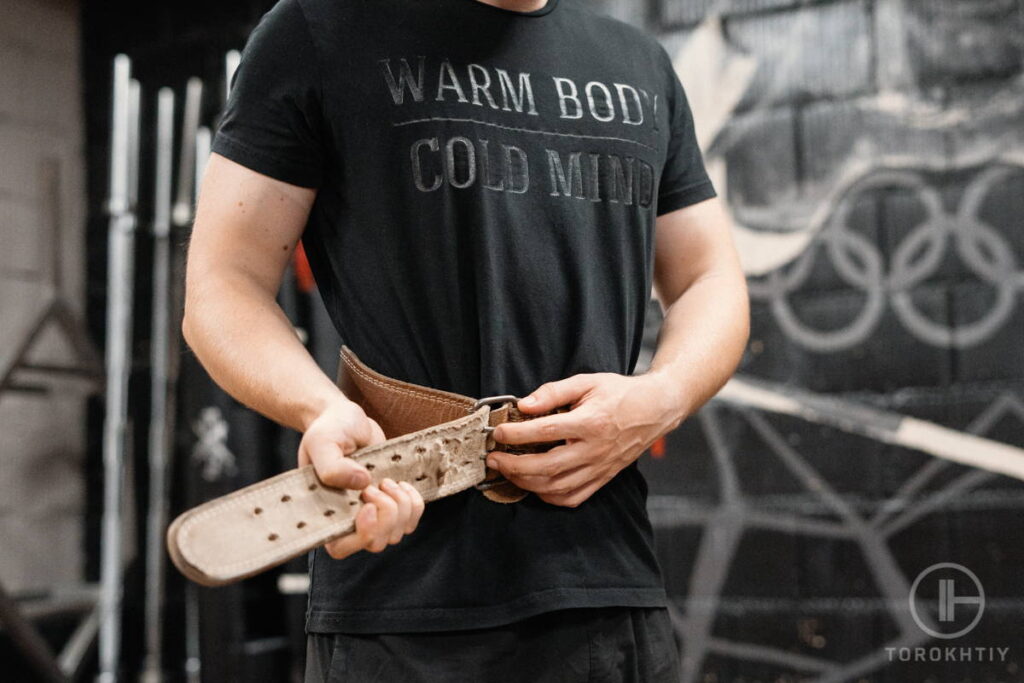
What do belts do for deadlifts?
There are definitely numerous reasons why you shouldn’t skip wearing a lifting belt when doing deadlifts.
1. Injury prevention. There can be some things that could go wrong if you lift loads more than your own weight and a lifting belt can help you lift safely. A belt can keep you free from any injuries when you’re lifting 80% or more of your one-rep maximum.
2. Helps you lift more weight. Training with a belt for a couple of weeks was found to help trained intermediate to advanced lifters lift 5-15% more weight for the some reps and sets.
3. Promotes ideal biomechanics. Lifting belts also assist lifters to promote safe and optimal biomechanics while performing a deadlift as it stabilizes the back so your legs get to put more work in. Wearing one decreases spinal flexion, spinal extension, and to a lesser degree, spinal lateral flexion.
4. Supports the spine. lifting belts reduce the compression throughout your lumbar spinal discs by increasing the generated intra-abdominal pressure. This pressure provides support to the spine as you move heavy weight, essentially keeping your back strong and safe throughout the lift.
How to wear a deadlift belt?
Belt positions
There are some factors that may affect the way a lifter positions the lifting belt. The three ways to wear the belt are:
HIGH BELT POSITION
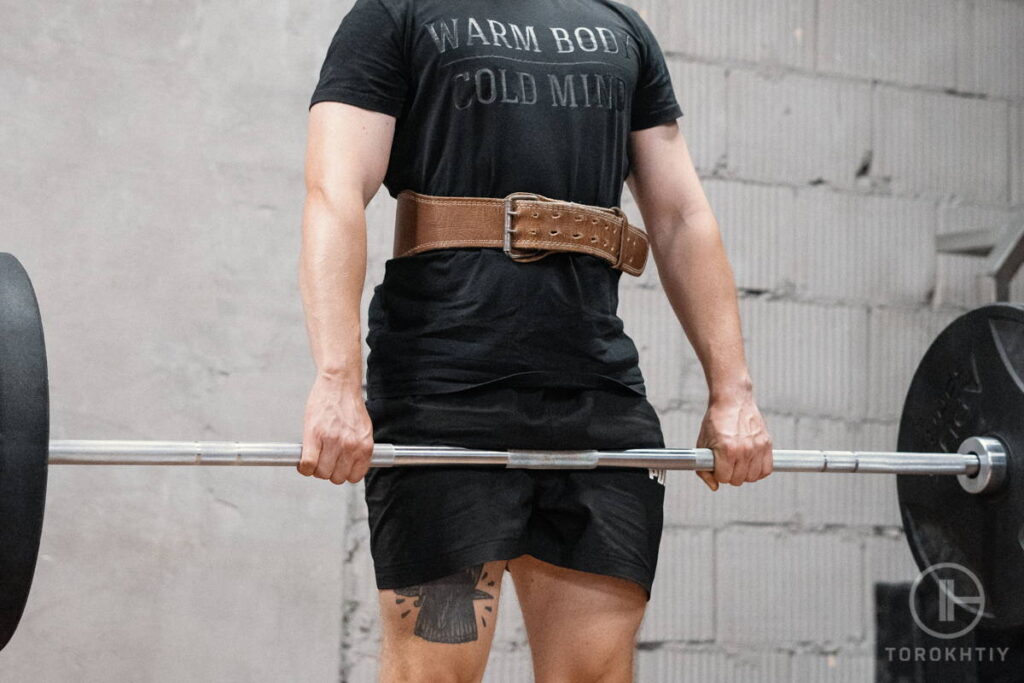
This belt position is when the lifting belt is wrapped around the midsection of the rib cage. More often than not, this is typically preferred by lifters who have a longer torso as this higher positioning helps keep their back stable when performing a deadlift.
Some also argue that the weakest spot of the back during deadlifts is the upper back, so putting the belt in this area should help support it. I also notice that a lot of lifters tend to round their upper-to-middle back region during a deadlift so it does make sense why a high belt position can keep the spine more stabilized.
MIDDLE BELT POSITION
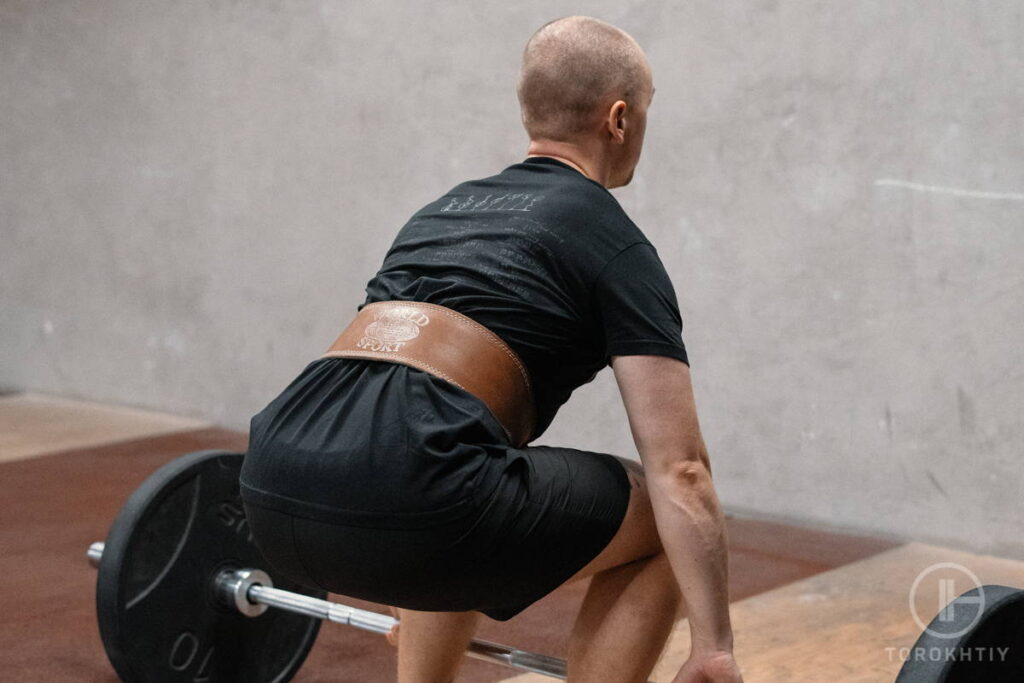
The most common out of the three is the middle belt position. This is simply wearing the lifting belt beneath the ribs but still above the hip bones.
A lot of lifters find this positioning comfortable since it steers clear from the ribs and hips. Moreover, the middle belt position is the best assist to bracing properly since it’s worn directly over the abdominals and the lower back.
LOW BELT POSITION
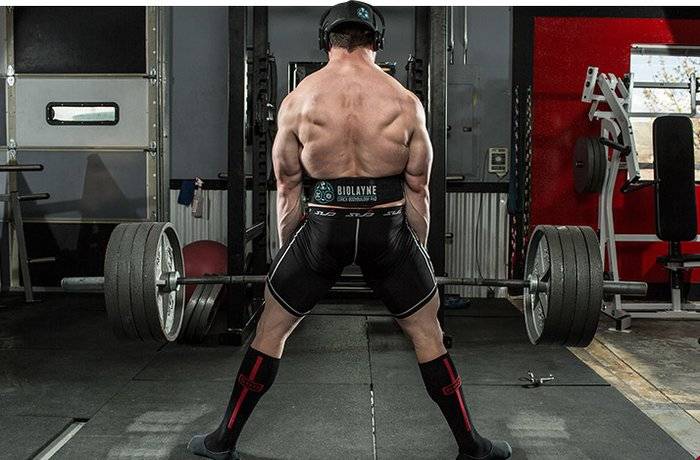
The low belt position is when the lifting belt is worn directly on or just below the hip bones. This is the ideal belt positioning for people with bigger bellies. Some lifters also claim that this belt position allows them to brace more effectively and that it prevents the belt from pinching them.
Belt tightness
Identifying the best level of tightness that works for you is a whole deal of trial and error. Your belt should be tight enough to give you support but not so tight that your abdomen has no room to expand for bracing.
To achieve the right level of tightness, keep your abdominals relaxed and in partial exhalation as you fasten your belt in place. It should be difficult to fit your fingers between your abdomen and the belt. Take note that you should be able to take a full deep breath with your belt on as you will need this to generate tension as you brace. The belt should not cause any discomfort nor inhibit you from taking a deep breath, especially at the beginning of a deadlift.
Now how would you know if the belt is too loose? Again, try to insert your fingers between you and the belt. If you’ve easily done the task, then chances are the belt is too loose. Bracing becomes a difficult task if the belt isn’t tight enough, and losing your bracing power means receiving less spinal support than you would have if the belt’s tightness is just right.
Another factor to consider is that the belt’s tightness for one exercise may vary compared to another. You may have to adjust the fit of your lifting belt as you switch movements. The hip hinge movement may cause the belt to feel extra tight compared to the usual squats. For this reason, a lot of lifters prefer to wear their belts a bit looser when they perform deadlifts.
What you can do is loosen it up a bit and check if it effectively supports your brace during the deadlift without feeling like you don’t have enough room to breathe deeply. If this isn’t how it feels, don’t worry! Getting the right fit requires trial and error. Be patient.
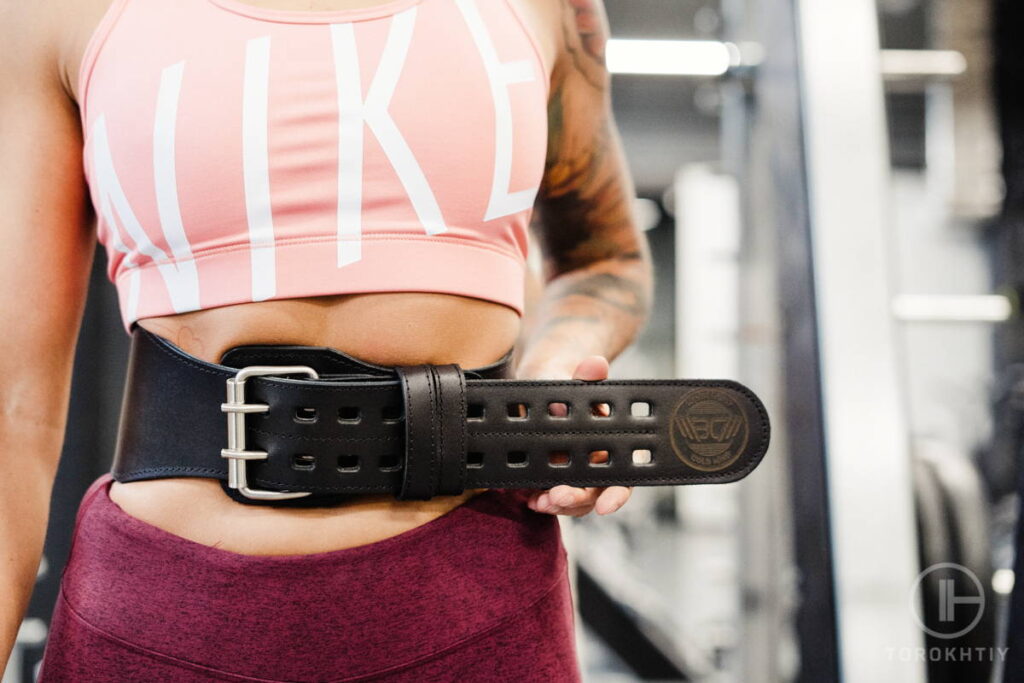
Common mistakes when wearing a deadlift belt
Wearing the belt too tight that it’s hard to brace
While a tight belt is a must to get the most out of your lifting belt, overdoing it can do more harm than good. Without enough space to generate tension and brace properly, you can lose lifting power and overall spinal support, defeating the purpose of wearing a belt in the first place.
You definitely do not want to clasp your belt tightly during maximum inhalation because this will result in a belt fit that’s too tight for your own good.
Using a weightlifting belt prematurely
Not all lifts require a belt. It will only serve its purpose when the spine is subjected to a really heavy load. Wearing a belt too early in your training may lead to slower muscular growth and strength. Initially, training without a belt when you’re still mastering the movement with lighter weights also trains the muscles that stabilize the spine.
Relying on this equipment too early may shy your core from reaching its full potential. A good benchmark to observe is to only begin using a belt once you’re lifting 80% or more of your 1RM. You don’t need to use a belt while performing warm-up sets.
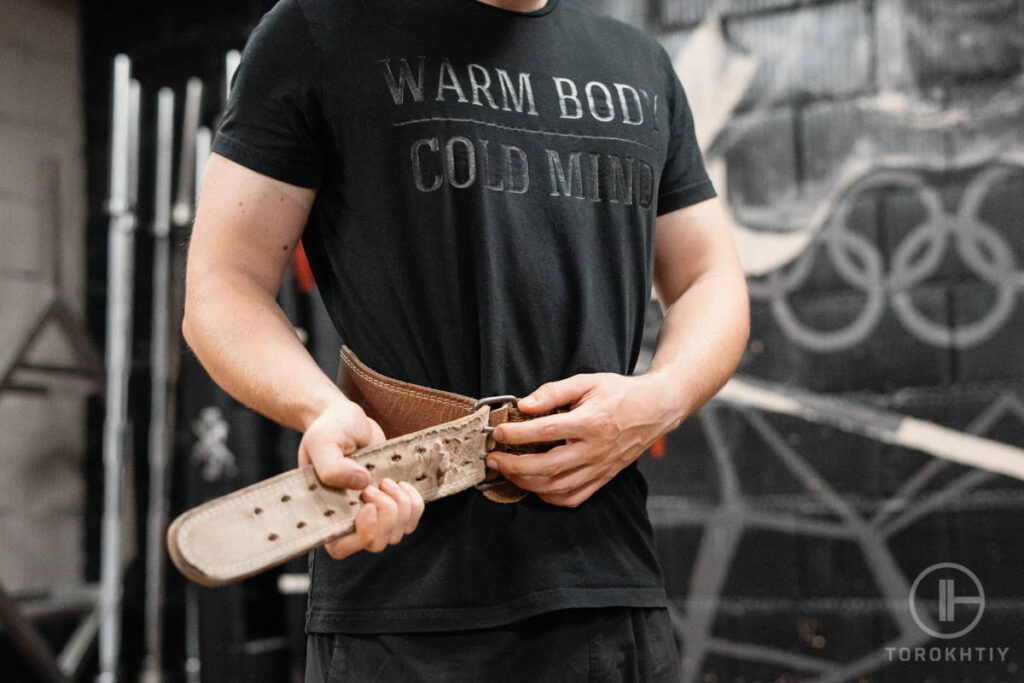
Insufficient activation of the abs
A weightlifting belt cannot support your spine without you activating your abs. It’s by providing a wall your abs can activate against that the lifting belt works to support your lifts. Once you’re at the beginning of the movement, take a deep breath and fill your belly with air so that your abdominals generate pressure and tension against the belt. This will help you make that deadlift stronger and safer.
Using your belt like a girdle
I’ve already discussed some reasons why you shouldn’t overtighten your belt, but surprisingly, some people purposely clasp the belts on until they can barely breathe. More than the fact that bracing will be too difficult in this situation, it can also lead to more harmful consequences such as bruising and restrictive injuries to the abdominal wall.
Remember, you have to be able to push against the belt while performing the lift. Otherwise, it wouldn’t serve its full purpose and may even do more harm than good.
Lifting belt we recommend
I personally recommend Warm Body Cold Mind’s Leather Weight Lifting Belt. It has lasted me a long time without signs of breaking or ripping despite lifting heavy most days of the week. The fit is also extremely easy to adjust in between movements.
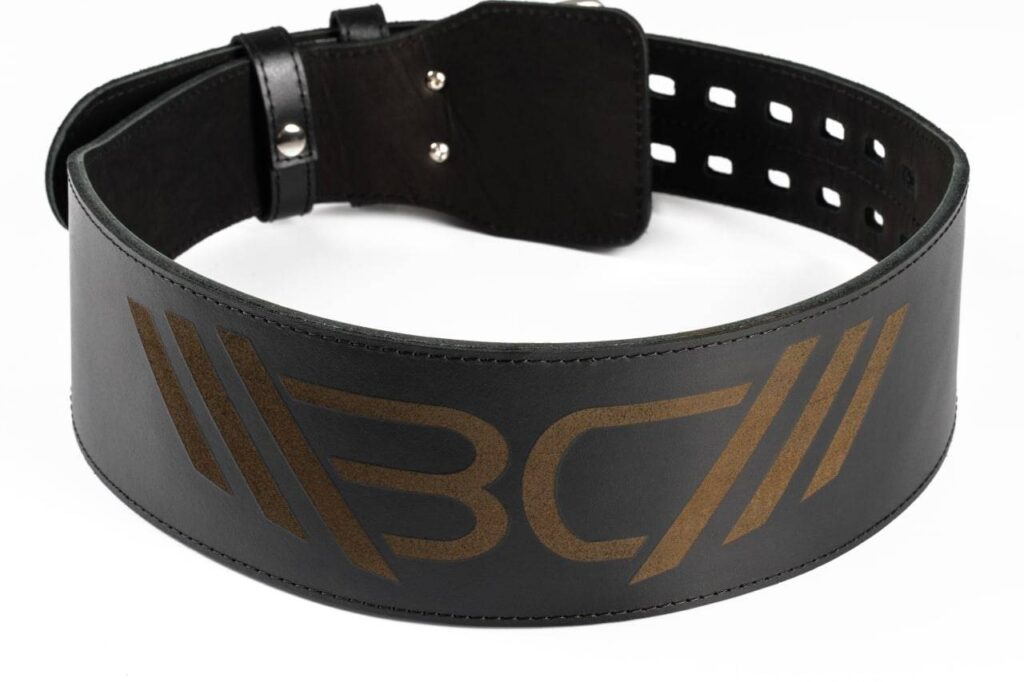
Another thing that I love with this lifting belt is that it has a comfortable padding system which allows you to just focus on the lift. I personally find myself being able to lift 10% more when I wear this weight lifting belt.
F.A.Q.
Is it good to wear a belt when deadlifting?
A lifting belt ensures the safety and effectiveness of your training by assisting you in maintaining the ideal biomechanics during deadlifts. This is especially true once the weight you deadlift is now so heavy that your back rounds up when beltless. It also offers magnificent assistance for bracing effectively to help you lift more.
So to answer the question: YES, when introduced timely in your training, it is good to wear a belt when deadlifting, especially when deadlifting HEAVY loads.
How tight should a belt be when deadlifting?
As we’ve discussed above, it may vary from one person to another. Generally, most lifters find it more helpful to wear their belts a bit looser in deadlifts compared to squats. The key here is to ensure that it’s not too loose that your finger easily fits between you and the belt but also not too tight that it makes it hard for you to brace and breathe deeply.
How much will a belt add to your deadlift?
An ideal weightlifting belt can assist you in lifting 10% more than you normally would without a belt. Lifting belts help increase your intra-abdominal pressure during weightlifting, creating a great ground for you to lift more.
Conclusion
The lifting belt position depends on various factors such as height and abdominal fat mass. So it takes trial and error to identify where should a lifting belt should be worn, but we’ve covered some guidelines to help you.
Feel free to share your thoughts and questions in the comment section below.
Also read:
- When to Start Using a Lifting Belt
- How Tight Should a Lifting Belt Be
- How to Wear Weight Lifting Belt
- Powerlifting Belt vs Weightlifting Belt
- What Size Lifting Belt Should I Get
- Best Weightlifting Belt
- Best Dip Belt
- Best Lever Belt
- Do You Need A Belt To Deadlift
References:
- The Belt Bible // Stronger by Science:
https://www.strongerbyscience.com/the-belt-bible/ - Effects of a belt on intra-abdominal pressure during weight lifting // PubMed:
https://pubmed.ncbi.nlm.nih.gov/2709981/
Why Trust Us?
With over 20 years in Olympic Weightlifting, our team does its best to provide the audience with ultimate support and meet the needs and requirements of advanced athletes and professional lifters, as well as people who strive to open new opportunities and develop their physical capabilities with us.
By trusting the recommendations of our certified experts in coaching, nutrition, dietology, and sports training programming, as well as scientific consultants, and physiotherapists, we provide you with thorough, well-considered, and scientifically proven content. All the information given in the articles concerning workout programming, separate exercises, and athletic performance, in general, is based on verified data. We ensure that you can rely on our professionals’ pieces of advice and recommendations that can be treated as personalized ones which will benefit you and fully meet your needs.
The product testing process is described in more detail here
Author: Ihor Shymechko
Pro Olympic Weightlifter, Coach
Best Results: Snatch – 208 kg,
C&J – 240 kg
Ihor has been a professional weightlifter since 1996, boasting over two decades of competition experience. His notable achievements include clinching the European Championship in 2009 and securing a silver medal in the 105kg division at the Senior World Championships in 2011. Ihor represented his country in the 2008, 2012, and 2016 Summer Olympics. After retiring from competitive weightlifting, he transitioned to coaching, leveraging his vast experience to guide athletes who now compete on both national and international stages.


